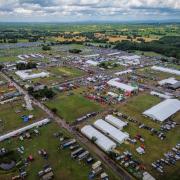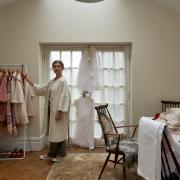Cheshire history man James Balme visits Swettenham
Swettenham is an ancient parish in the Dane Valley, five miles from Congleton and clues from Anglo-Saxon times have been found there.
Southeast of the village stands Swettenham Hall, constructed during the 17th century and remodelled in the 19th century. The village inn, the Swettenham Arms, was built in the 16th century and was once linked to a nunnery. The pub is reputed to be haunted by a ghost that has appeared to customers in the form of a nun dressed in black. The story goes that a nun was murdered nearby as a punishment for breaking her vows and taking a husband.
On the site of the parish church, dedicated to St Peter, evidence remains of early Christian activity and a Saxon sandstone cross was discovered during building work and excavations in the 19th century. The cross can still be seen today inside the church, built into an alcove above the west entrance.
It’s believed the oldest part of St Peter’s can be dated to the Norman period – around 1260 AD.
Within the church tower can be found three solid bronze bells with dates ranging from 1627 through to 1689 and on the wall of the north aisle, housed within a glass case, is a violin and bow, played by villager Charles Newton who died in 1811.
Parish records have been kept at St Peter’s date back to 1547 when these records of local life were written in Latin. Several interesting entries are recorded. On the 30th of July 1743, for example, churchwardens offered the sum of three pence to ’Sparrow Hunters’ if they could kill a score within the parish. Another entry goes on to record a recipe for ‘the cure of the bite from a mad dog or cat’. The registers can be viewed at the County Records Office in Chester.
Outside of St Peter’s and mounted high on the wall within an alcove, an original crest of the Mainwaring dynasty can be found, representing the head of an ass. Legend has it that a Mainwaring family lord, fighting at the battle of Ascalon during the first crusades in 1099 AD. had his horse shot from beneath him, and with no other horses within sight, he managed to catch a wild ass and make good his escape. As he rode away he was heard to shout, ‘devant ce je puis’ translating to ‘ahead if I may’. In time this became the family motto of the Mainwaring family.
My film, From the Saxons to St Peter, can be viewed for free with many other local history films at youtube.com/Tvpresenter4history
Things to look out for
The violin and bow dated to 1811, which belonged to Charles Newton
The stone Saxon Cross, now on display above the west entrance
The original crest of the Mainwaring family, in the form of an ass, mounted on the outside wall of the church



























